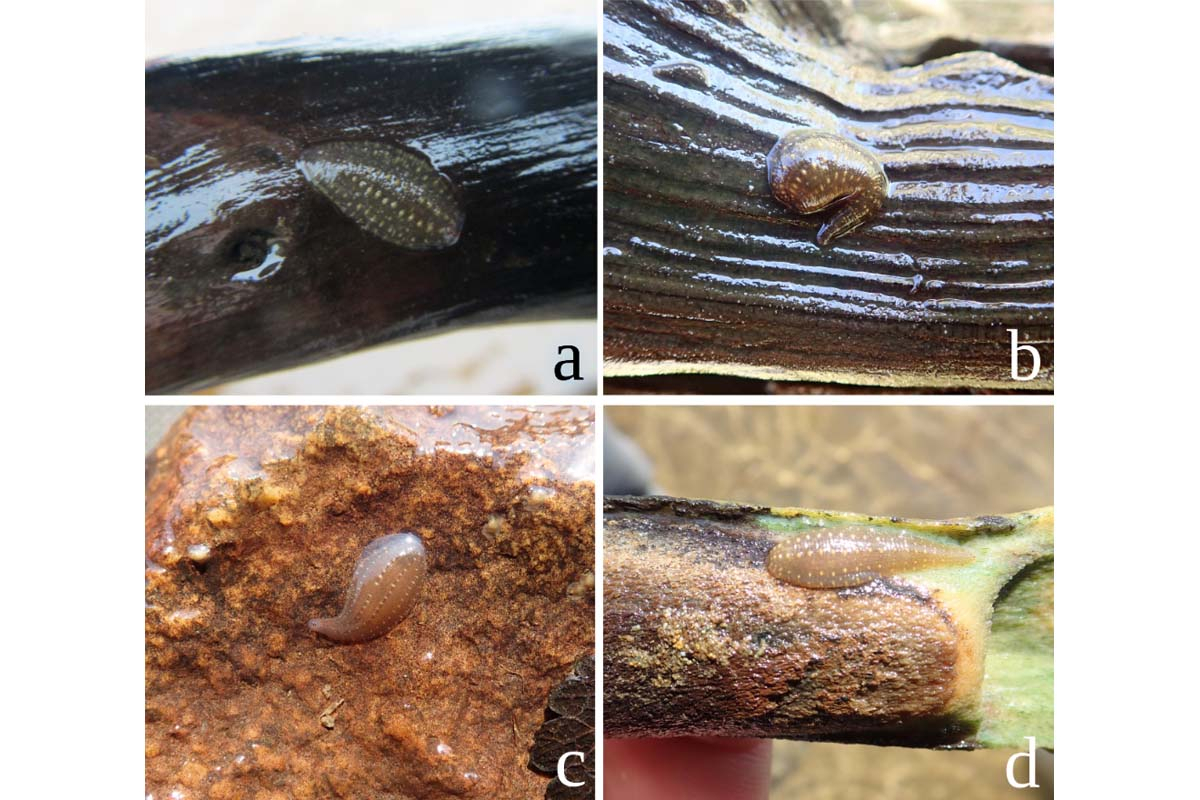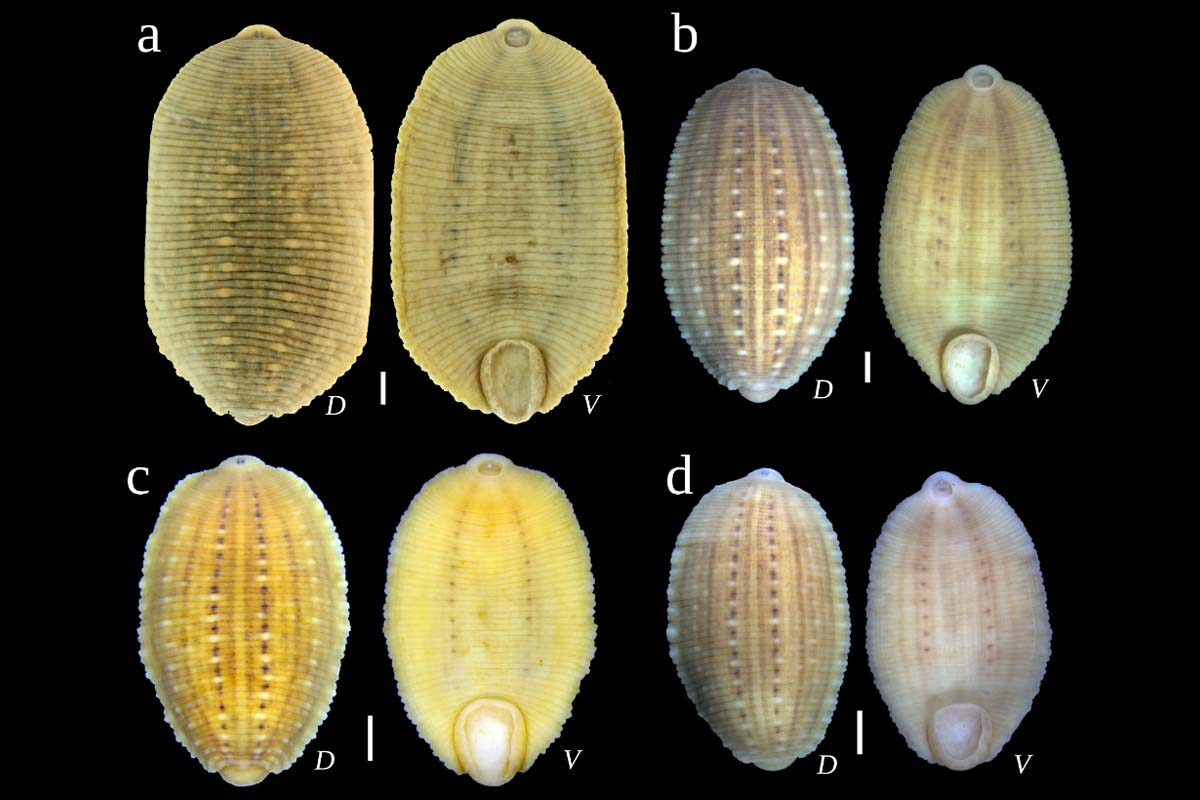Scientists from St Petersburg University and the Laverov Centre name an Arctic leech after a mistaken zoologist and discover its Korean 'sister'
Russian zoologists have found a mistake in determining a flat leech genus and named a new species in memory of the scientist who made that mistake. They also found a related species in South Korea and described their differences from the other species known to science.

Flat leeches of the genus Glossiphonia are widespread in freshwater bodies, such as rivers, lakes, ponds, ditches and even puddles, throughout Eurasia. Yet there are still many gaps in the knowledge of the species composition and distribution of this group. Some of these gaps appeared centuries ago. The scientists from St Petersburg University and the Laverov Federal Centre for Integrated Arctic Research of the Ural Branch of the Russian Academy of Sciences discovered at least two new species-level Glossiphonia phylogenetic lineages in Northeast Asia. They belong to the so-called verrucata group (subgenus Boreobdella Johansson).
The research findings are published in the Diversity scientific journal.
One of the species found was described by Dr John Percy Moore, an American zoologist, in the late 19th century. The scientist took the leech from the Commander Islands for a representative of a species that had previously been discovered in Lake Baikal and used its existing name of Glossiphonia mollissima. As it turned out later, the leech inhabiting Lake Baikal is a completely different one. However, the definition mistake made in the 19th century persisted in the works of various scientists for a long time.
As the zoologists note, this kind of refutation is a natural process for science. Each year, the technologies of search and molecular genetic and morphological study of living organisms are improved, which makes it possible to determine their types with more accuracy and study their structure in great detail.
’For more than a century, no one has been puzzled by the issue of the status and the correct scientific name of this leech. And according to the International Code of Zoological Nomenclature, if a species has been given a name as a result of a definition error, then it must be renamed. Dr Moore was the first to find this species, and although he made a mistake in its definition, we decided to name the species in memory of the scientist, Glossiphonia moorei,’ said Ivan Bolotov, Corresponding Member of the Russian Academy of Sciences and Director of the Laverov Federal Centre for Integrated Arctic Research of the Ural Branch of the Russian Academy of Sciences.
St Petersburg University, the oldest university in Russia, was founded on 28 January (8 February) 1724. This is the day when Peter the Great issued a decree establishing the University and the Russian Academy of Sciences. Today, St Petersburg University is an internationally recognised centre for education, research and culture. In 2024, St Petersburg University will celebrate its 300th anniversary.
The plan of events during the celebration of the anniversary of the University was approved at the meeting of the Organising Committee for the celebration of St Petersburg University’s 300th anniversary. The meeting was chaired by Dmitry Chernyshenko, Deputy Prime Minister of the Russian Federation. Among the events are: the naming of a minor planet in honour of St Petersburg University; the issuance of bank cards with a special design; the creation of postage stamps dedicated to the history of the oldest university in Russia; and the branding of the aircraft of the Rossiya Airlines to name just a few. Additionally, the University has launched a website dedicated to the upcoming holiday. The website contains information about outstanding University staff, students, and alumni; scientific achievements; and details of preparations for the anniversary.
The leech misidentified by Dr Moore lives in Chukotka, Kamchatka, Kolyma, the Russian Far East up to the Amur River, Sakhalin, Alaska, and, as the St Petersburg University zoologists suggest, Japan. Glossiphonia moorei is very similar to the inhabitant of Europe, the snail leech Glossiphonia complanata, but genetic and morphological studies have shown that this is an independent Far Eastern and Arctic species.
Thus, the leech differs from other congeners by a combination of the following characters: six rows of ovate, broad, but shallow dorsal papillae, each with a yellow or whitish spot; dorsal markings pattern with two blackish dotted outer paramedian lines; and two outer dark lines in the pattern of ventral markings. In addition, Glossiphonia moorei discovered by the St Petersburg University scientists is characterised by a high percentage of melanists, specimens with a dark colour in populations.
’A statistically representative sample enables us to say with a high degree of certainty that in the Arctic latitudes this species has significantly more dark-coloured specimens than the light ones. This is especially characteristic of Glossiphonia moorei,’ said Maxim Vinarski, Head of the Laboratory of Macro-Ecology and Biogeography of Invertebrates at St Petersburg University.
According to Maxim Vinarski, dark-pigmented specimens of this species usually choose a dark substrate such as stones, soil or darkened wood for their settlement, while the lighter ones, on the contrary, choose a similar, but light substrate. This is probably one of the ways to avoid predators by becoming less visible to them.

However, according to Maxim Vinarski, it is possible that the darkening of some specimens is affected by a lengthy (polar) light day in the Arctic. ’There may yet be another explanation. Dark colour enables leeches to attract additional solar heat, but it is not certain that this is true for aquatic species. There is also an alternative, directly opposite explanation. A high level of pigmentation, dark spots, can be a better protection against ultraviolet radiation. However, these are all hypotheses and there is no definite explanation for this feature of Glossiphonia moorei yet," the scientist added.
In addition, as part of a large-scale research project, the scientists have discovered another species of this genus of leeches in South Korea. It has been repeatedly mentioned in the literature under the name Glossiphonia complanata. The zoologists from St Petersburg University and the Laverov Centre managed to prove that this identification was also incorrect. The new species was titled Glossiphonia koreaensis. The zoologists believe that this species had a common ancestor with Glossiphonia moorei, but the processes of mountain building, changes in river basins and other factors led to the evolutionary and geographical separation of the ’sisters’ in the Asian continent. As Maxim Vinarski noted, the Korean species was probably the only one representative of that genus on the Korean Peninsula.

’Glossiphonia koreaensis is a medium-sized leech that can be distinguished from its relatives by a combination of the following features: six rows of dorsal papillae; two blackish dotted outer paramedian lines accompanied by 10–12 brown longitudinal lines in the pattern on the back; and ventral markings pattern with two outer paramedian series of dark spots. This is an unusual, rather unique, pattern for leeches in this area,’ Maxim Vinarski explained.
For their research, the scientists collected Glossiphonia specimens in various water bodies throughout Siberia, the Far East, and South Korea. According to them, their findings suggest that the genus Glossiphonia is a fairly species-rich clade of freshwater leeches, which currently contains at least 16 reliable species.

